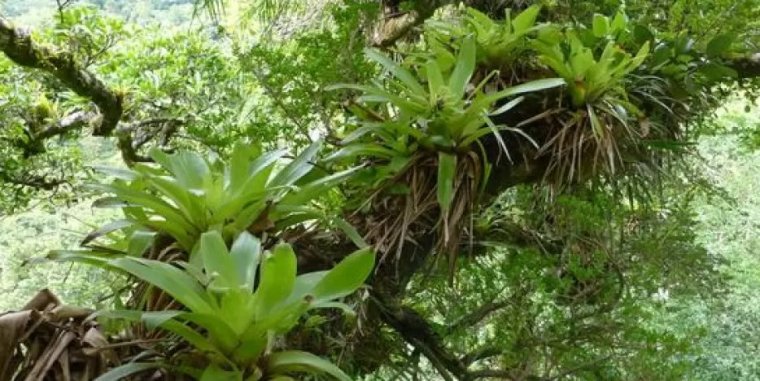| News / Science News |
Epiphytes, plants such as moss and bromeliads found in trees, face growing threats
Orchids, mosses and ferns — or epiphytes, defined as nonparasitic plants that grow on other plants — are crucial for Earth's biodiversity and play essential roles in forests worldwide, building habitats in trees for a myriad of other life forms, from bacteria and insects to birds and reptiles.

A view of epiphytic plants in a rainforest canopy; the plants face growing threats. Credit: Nalini Nadkarni
Epiphytes display an astonishing array of diversity, with 28,000 known species.
However, the very attributes that have enabled epiphytes to thrive in forest canopies are now making them vulnerable to both natural and human-caused disturbances, according to University of Utah biologist Nalini Nadkarni.
In a study, Nadkarni found these fascinating and vital plants are under significant pressure because of rapid environmental change and proposes specific actions for preserving them.
"This synthesis revealed the exceptional vulnerability to the increasing levels of disturbances — such as climate change and deforestation — on the abundance diversity and connectivity of canopy-dwelling plants around the globe," she said.
"Although we categorize the disturbances with greatest negative effects on canopy plants as 'natural,' as hurricanes and wildfire, human activities are increasing the severity and frequency of those in the USA and around the world."
The paper reviews the available science on epiphyte communities and categorizes the drivers and consequences of and societal responses to drought, wind, insects, wildfire, logging and other disturbances.
Her findings should serve as a wake-up call to land managers and others interested in preserving the health of the world's woodlands.
"Across all impacts, disturbance agents were significantly more likely to lead to negative, rather than positive, effects in both tropical and temperate locales," Nadkarni wrote.
The study examined 255 previous papers on ecological disturbances impacting epiphytes in 58 countries.
"Communities of plants that live in rainforest canopies — ferns, orchids and bromeliads — play 'keystone roles' in maintaining biodiversity, fostering critical interactions for pollination and seed dispersal and maintaining healthy nutrient cycles, even though their biomass is small relative to whole forests," she said.
"Many of them have been cultivated by people for centuries because of their beauty and the ways they connect us aesthetically and spiritually to nature." (U.S. National Science Foundation)
YOU MAY ALSO LIKE





